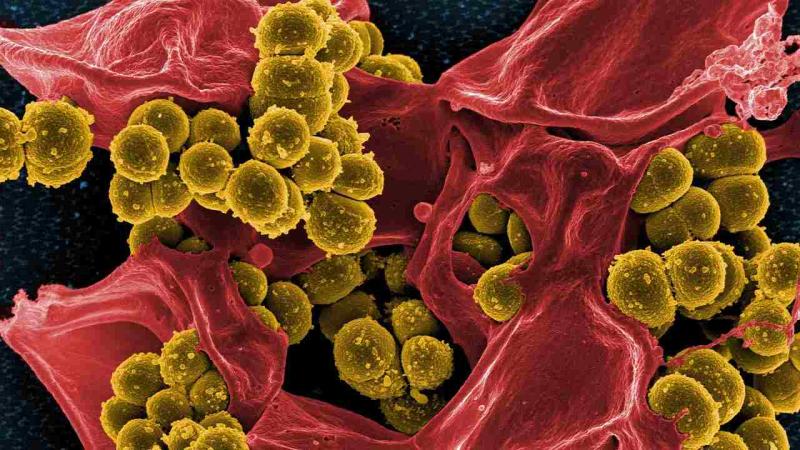
Bacteria like Salmonella and Mycobacterium, which have developed resistance to multiple drugs, are now a global health challenge. Studies estimate that the number of people succumbing to infections caused by drug-resistant bacteria is on the rise, with 33,000 deaths annually in Europe alone. From homes to hospitals, these superbugs are ubiquitous, and hence, there is a dire need for novel alternatives to fighting them. In a recent study, researchers from the Indian Institute of Science, Bengaluru, Bose Institute, Kolkata and the JNTUA College of Engineering, Anantapur, propose a novel combination of peptides and silver nanoparticle that can kill many types of drug-resistant bacteria.
Antimicrobial peptides are short chains of amino acids present in our immune system that can kill different bacteria, virus, and fungi. Silver nanoparticles are tiny particles of silver measuring between 1 nm to 100 nm (1 nanometer is a billionth of a metre) and are known to act against microbes. In the current study, published in the journal Scientific Reports, the researchers use both these to design an antibacterial agent, as peptides fight better against bacteria if they are tagged with nanoparticles.
The researchers modified an antimicrobial peptide called Andersonin-Y1 by adding another amino acid called cysteine to one of the ends of this molecule. Cysteine helps in the binding of the peptides with the nanoparticle.
“Tagging a cysteine residue at the terminals not only enhances the binding propensity of the resultant peptide with the silver nanoparticle but also increases its antimicrobial property against several pathogenic bacterial strains”, they explain.
The researchers then tested how this modified peptide-nanoparticle conjugate fought against bacteria like Klebsiella pneumonia, Pseudomonas aeruginosa and Salmonella typhi—members of the ‘ESKAPE’ pathogens that are known to be resistant to drugs. They then compared the action of the conjugate with the parent peptide and found that the conjugate exhibited a 10-fold increase in the antibacterial activity against these bacteria.
So, how exactly does this conjugate work against the bacteria? When the researchers observed its action under the microscope, they found that it ruptured the bacterial cell surface, thereby killing it. The peptides detached from the silver nanoparticle and formed a pore on the bacterial cell membrane. The researchers speculate that silver nanoparticles may also enter the cell, bind to the DNA, and enhance cell death.
The conjugate was also found to fight better against bacteria than the peptide or silver particles alone. “This can be attributed to the silver nanoparticle-mediated delivery of a large number of peptide molecules close to the bacterial cell membrane along with the enhanced stability of the nanoparticles in the presence of the peptides”, say the researchers, talking about the action of the conjugate.
The researchers add that the proposed combination is efficient in killing superbugs like K. pneumoniae at low concentrations and provides a promising lead in the area of nanomedicine. “This brings out the applicability of antimicrobial peptide-nanoconjugates as a new horizon for antimicrobial agents with enhanced activity”, they conclude.






